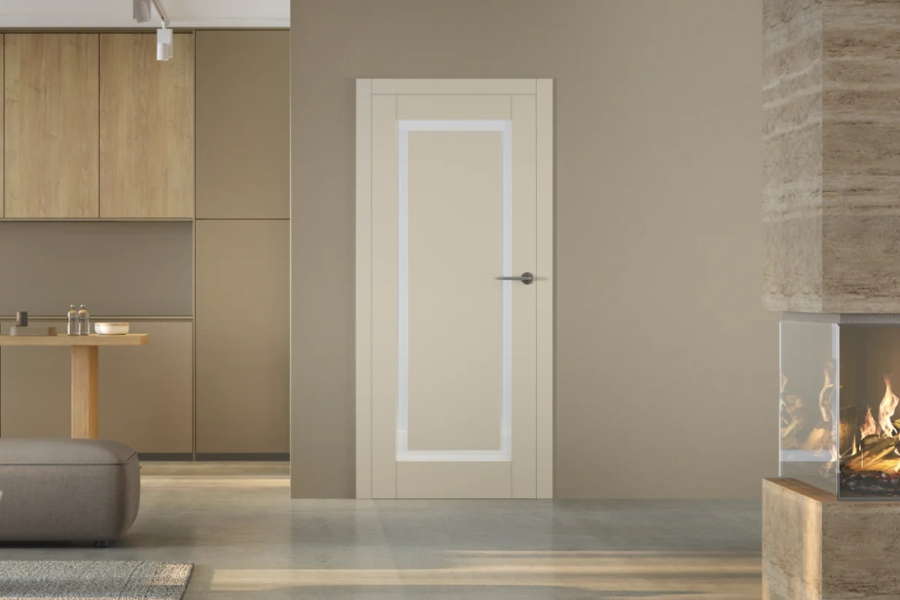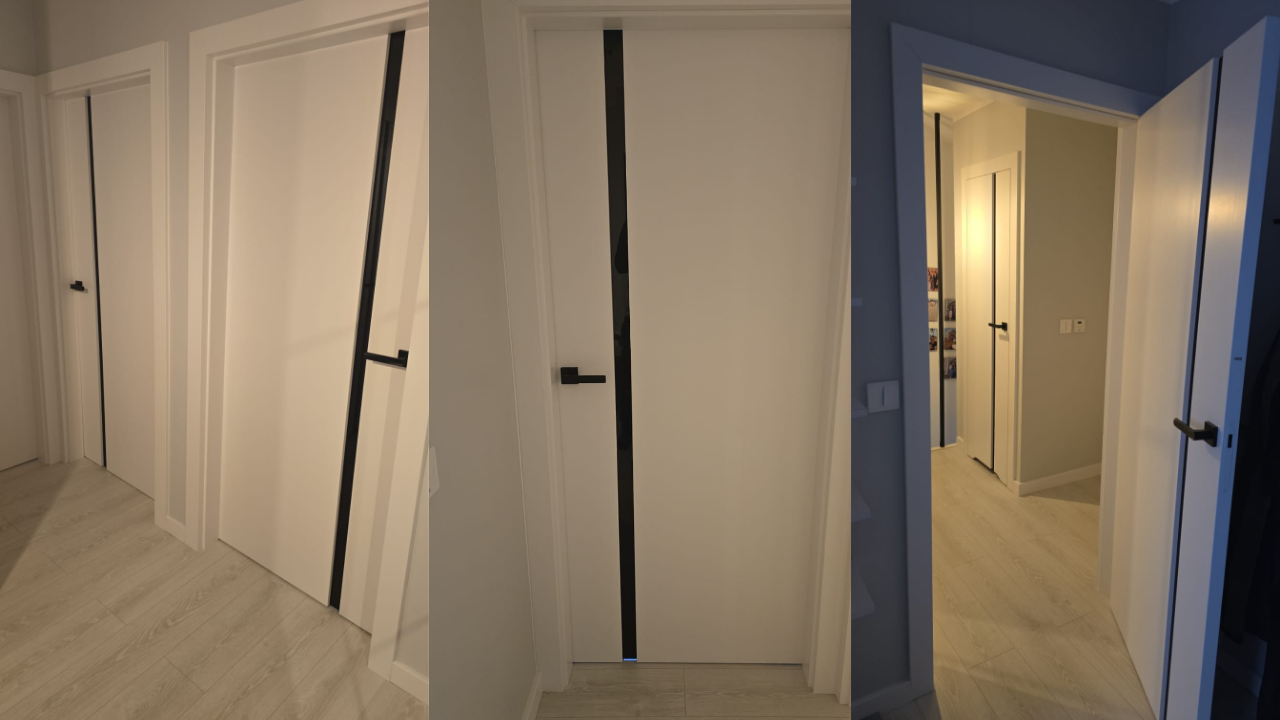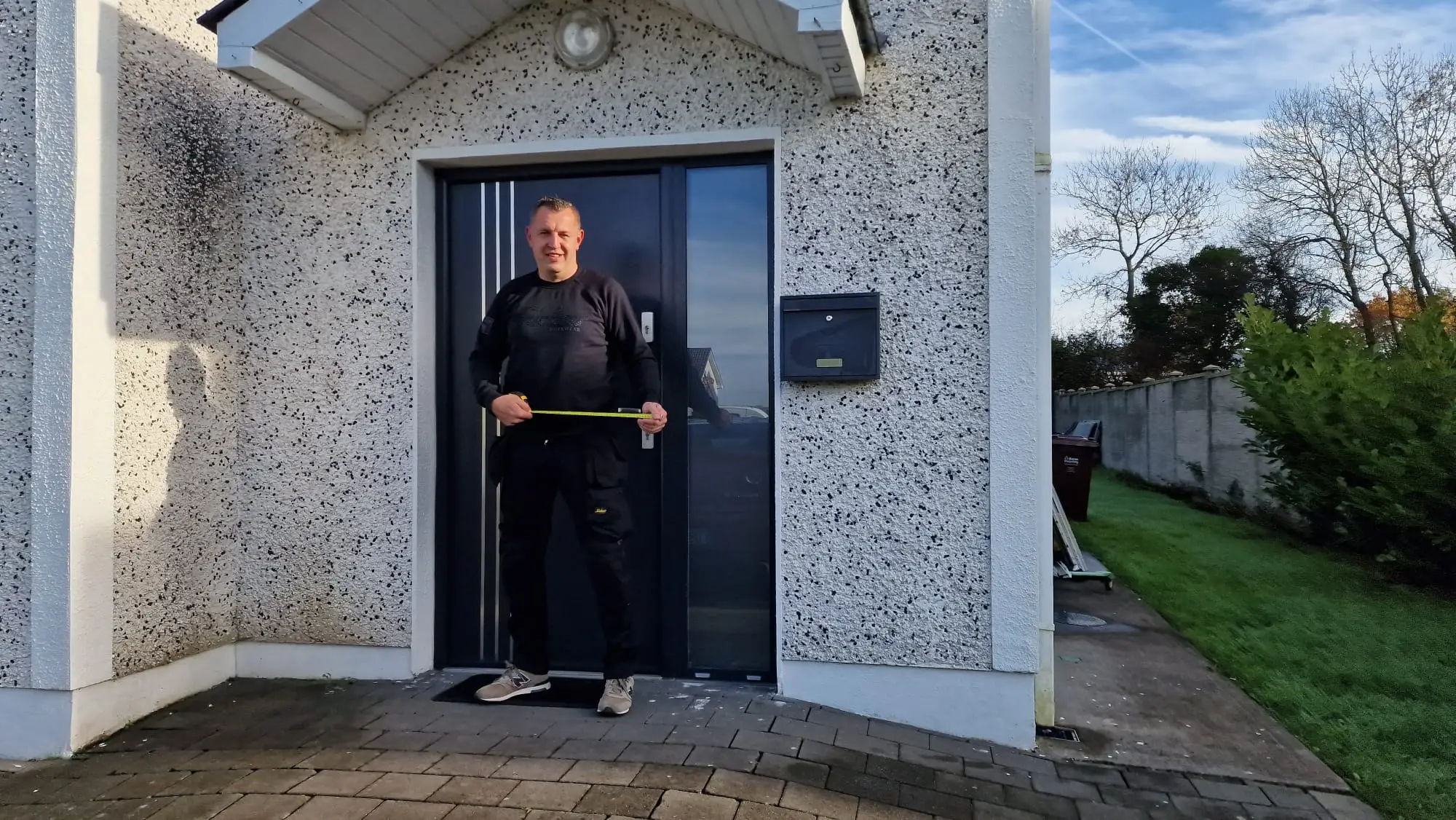Thinking about new internal doors? Don’t skip the measuring stage – it’s the key to a smooth installation. A difference of just a few millimetres can mean that the door does not fit properly, the frame sits unevenly, or installation becomes much more complicated and costly.
The main rule is to always measure more than once. Take measurements in several places and record the smallest result. Always include the thickness of the finished floor in your calculations and decide on the door swing direction at the beginning. In this guide, our trusted Fenbro expert shares even more practical tips to help you measure like a pro and avoid the most common mistakes.
Tools for measuring interior doors
Before taking any measurements, make sure you have the right tools ready. Here’s what you’ll need:
- Steel tape measure – provides accurate results and does not bend like fabric ones.
- Spirit level – helps to check whether the walls are vertical and the floor is level.
- Pencil and notebook (or phone notes) – to record all dimensions.
Having these tools ready ensures that your measurements will be reliable and easy to repeat if needed.
How to measure for interior doors correctly?
The process comes down to a few simple checks: width, height, wall thickness and swing direction. The following steps will help you make sure your new doors fit perfectly.
Measure the width
Start with the width of the opening. Measure it at the top, in the middle and at the bottom. Walls are often not perfectly straight, so you should always take the smallest value as the correct one. For doors with fixed wooden frames it is good practice to leave a clearance of about half a centimetre on each side.
Measure the height
Next, check the height of the opening. Measure on both the left and right side and again record the smaller figure. The most important rule here is that measurements must be taken from the level of the finished floor. If the flooring has not yet been installed, remember to add its thickness to your result.
Measure the wall thickness
The third element is the wall thickness, which matters especially when choosing adjustable frames. For example, if the wall is 10 cm thick, you will need a frame that can cover up to 12 cm. Adjustable frames make it possible to hide imperfections and fit the frame to different wall depths.
Decide on the door swing
Finally, decide on the swing and handing of the door. Stand in front of the opening and check the position of the hinges. If they are on the left side and the door opens towards you, it is a left-hand door. If they are on the right, it is a right-hand door.
How are interior doors measured in practice?
We asked our experienced Fenbro fitter, Marcin Wojtyczko, for practical advice. This is what he said:
“If the doors come with an adjustable frame, I always measure the width, height and wall thickness. The frame must match the wall – for example, when the wall is 10 cm thick, the adjustable frame should cover up to 12 cm.”
For internal steel doors, accuracy is even more important:
“Steel doors are measured very precisely on a finished wall. If the opening is 82 cm wide, I usually reduce it to 81.5 cm. That way the door fits snugly, without the need for extra corrections.”
When it comes to wooden doors with fixed frames and trims, the installer recommends leaving more room:
“With wooden doors, I measure the entire opening but leave about a centimetre clearance in total – half a centimetre on each side. Any small gaps are hidden by finishing trims, so the result looks clean and professional.”
And finally, a note that applies to every type of door:
“Never forget about the floor. The height should always be measured from the finished floor level, or you need to include the thickness of the floor that will be installed later.”
Standard interior door sizes – what to expect?
Most manufacturers offer standardised dimensions. The most common widths are 60, 70 and 80 cm, while 90 cm (or larger) doors are often available on request. In terms of height, the standard is usually 200 or 203 cm.
It’s important to understand that the wall opening always needs to be larger than the door leaf itself. Installers recommend leaving a clearance of around 0.5–1 cm to make fitting easier. However, manufacturers provide exact technical guidelines that also include the frame dimensions. For example, Erkado specifies that an 80 cm door with an adjustable frame requires an opening of 88 × 206 cm, while the same door with a fixed frame needs 91 × 207 cm.
These figures clearly show that “standard size” can vary depending on the frame type and manufacturer, so the exact specification should always be checked before ordering.
Interior door sizes – choosing the right option
Standard sizes, like those listed above, are suitable for most interiors and work well in newly built homes with regular openings. However, not every project fits into these dimensions. Custom-made doors are a great solution for older buildings with irregular wall openings, for projects that require wider doors to improve accessibility, or for interiors where every detail must be perfectly matched.
While tailor-made options usually cost more and require longer lead times, they provide maximum flexibility and a flawless fit. At Fenbro, we offer customised door sizes on request, so you can be sure that even non-standard openings will be covered with a perfect solution.
Measuring for internal door: common mistakes
Even simple measurements can go wrong if you overlook key details. Below are the most common mistakes to avoid:
- Taking only one measurement – openings are rarely perfectly straight, so you should always measure in several places and use the smallest value.
- Ignoring the finished floor level – forgetting about the final flooring thickness can result in the door scraping against the floor once installed.
- Mixing up door handing – left-hand and right-hand openings are easy to confuse but essential for correct installation.
- Overlooking wall thickness – this matters especially when choosing between fixed and adjustable frames.
- Measuring too early – dimensions taken before the walls and floors are fully finished may be inaccurate.
- Assuming door size = opening size – in reality, the opening must be wider and higher to accommodate the frame and leave clearance for fitting.
By keeping these points in mind, you can avoid unnecessary corrections and ensure your new interior doors fit perfectly from day one. For front doors, accurate measuring is just as important. Mistakes there can affect thermal comfort and security, as we explain in this article.
Professional measuring visit = peace of mind guaranteed
Accurate measurements are the foundation of a successful installation. You can, of course, take them yourself following our step-by-step guide. But if you want to be absolutely sure that everything will fit perfectly, it is worth booking a professional measuring visit with Fenbro. When you choose this option, our trusted fitters come directly to your home and take all the necessary measurements with professional tools. They know exactly what to look for, so there is no risk of error. What’s more, during the visit they can bring samples of our products and colour swatches.
By relying on Fenbro recommended specialists, you save time, avoid costly mistakes, and make the whole process smoother. That way, your new interior doors will look and function exactly as they should.
Make the right start with Fenbro. Request your free quote today.
Conclusion
Knowing how to measure for an internal door is essential for a smooth and problem-free installation. Always measure the width and height in several places, take into account the wall thickness, and remember the finished floor level. Use the standard interior door sizes as a guideline, but always verify the exact opening dimensions recommended by the manufacturer.
Planning on getting new windows too? Check out our guide: How to measure windows correctly? Use these useful tips from our Expert!
Frequently Asked Questions (FAQ)
How to measure interior doors correctly?
To measure interior doors correctly, always check the width, height and wall thickness in several places and note the smallest value. At Fenbro, our trusted fitters recommend leaving a small fitting clearance to make installation easier and to avoid costly mistakes later.
What is the standard interior door size?
The standard interior door size is usually 60, 70, 80 or 90 cm wide and 200–203 cm high. However, Fenbro also offers custom-made solutions for customers who need non-standard interior door sizes, for example in older houses or for accessibility projects.
Why is accurate measuring of interior doors important?
Accurate measuring ensures that your new doors will fit perfectly, operate smoothly and look great from day one. Fenbro’s experts explain that even a few millimetres of error can cause problems with fitting, uneven frames or additional costs during installation.



